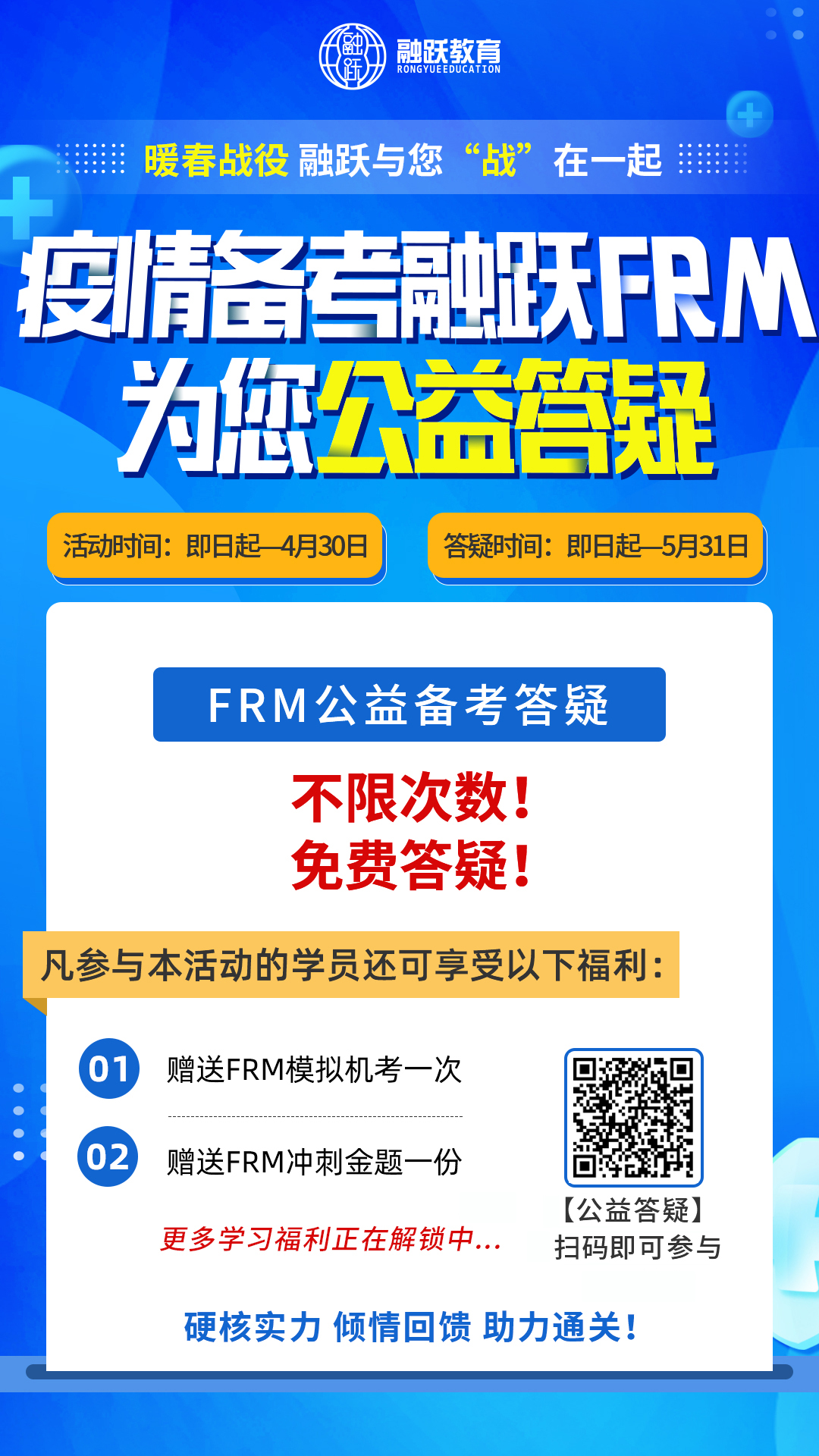现在考生为了迎接FRM二级考试的到来,都在认真备考。为了顺利通过考试,对于FRM真题的练习是很重要的。下文是列举的相关真题解析,备考生看过来!
How many of the following statements regarding wrong-way risk and right way risk are correct?
》》》2022年新版FRM一二级内部资料免·费领取!【精华版】
●Co-movement in risk exposure and default probability producing a decline in overall risk is an example of wrong-way risk.
●Co-movement in risk exposure and default probability producing an increase in overall counterparty risk is an example of right-way risk.
●Co-movement in risk exposure and default probability producing neither a decline nor an increase in the overall counterparty risk is an example of wrong-way risk.
●Co-movement in risk exposure and default probability producing a decline in risk exposure but an increase in counterparty default probability is an example of right-way risk.
A) None
B) All
C) Two
D) Three
答案:A
解析:Adecline in overall counterparty risk is an example of right-way risk.An increase in overall counterparty risk is an example of wrong-way risk.An increase in overall counterparty risk is a condition for the emergence of wrong-way risk. A decline in risk exposure but increase in counterparty default probability may or may not lower overall counterparty risk.
Arisk manager needs a quick calculation of the BCVAon a swap. Assume inputs
are as follows: EPE = 5%, ENE = 3%, counterparty credit spread = 300bps,
financial institution credit spread = 200 bps. Compute BCVAfrom the perspective
of the financial institution.
A) -1
B) 1
C) 9
D) -9
答案:C
解析:From the perspective of the financial institution:
EPE×counterparty credit spread–ENE×institution credit spread=5%×300–3%×200 = 9 bps
This is what the financial institution may charge the counterparty for overall counterparty risk.
如果想要获得更多关于FRM考试的真题解析,点击在线咨询或者添加融跃老师微信(rongyuejiaoyu)!












